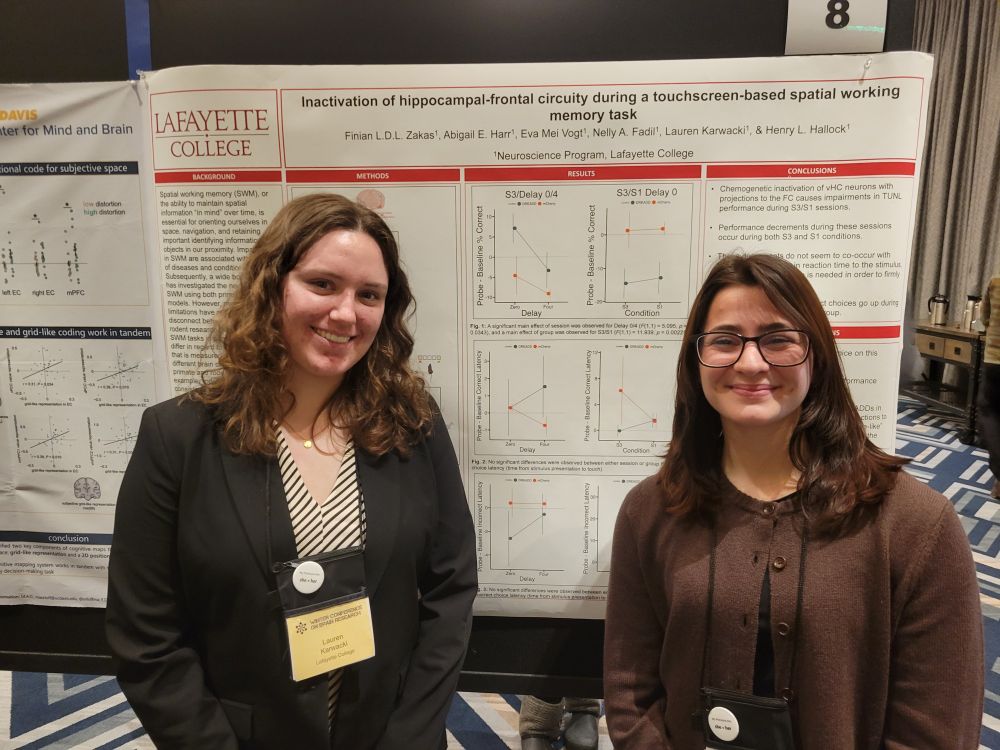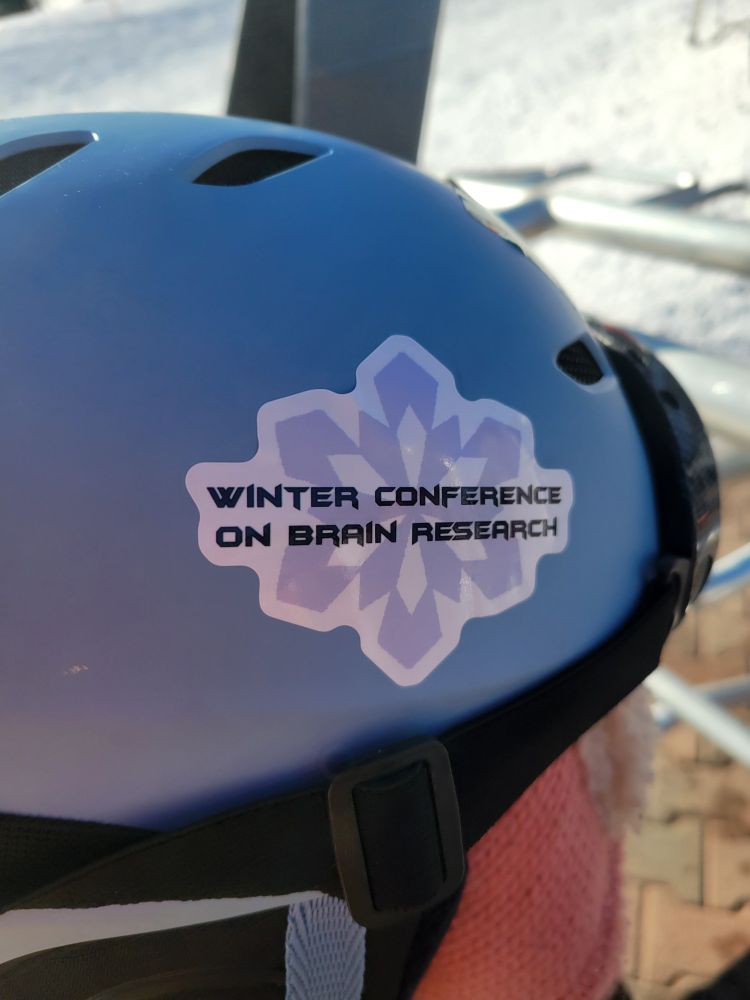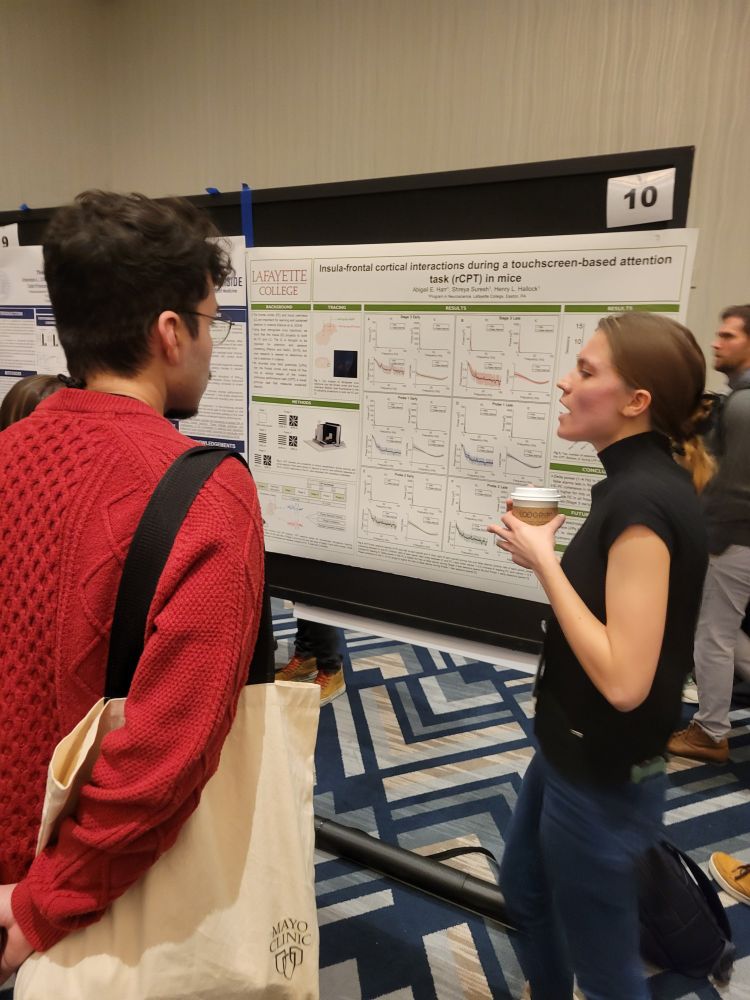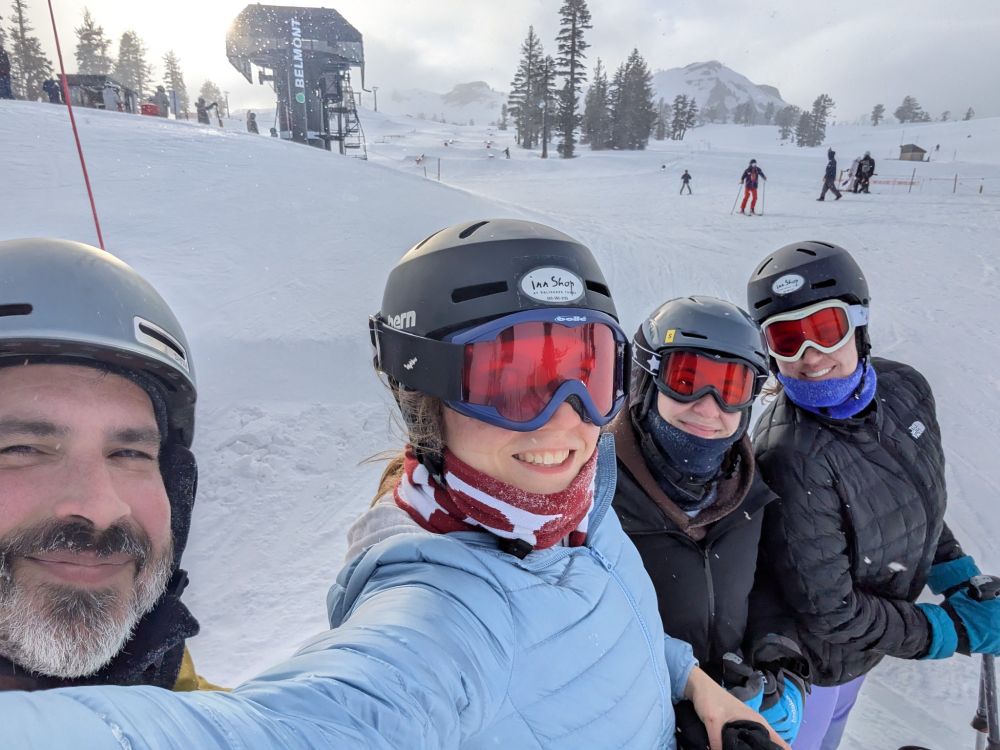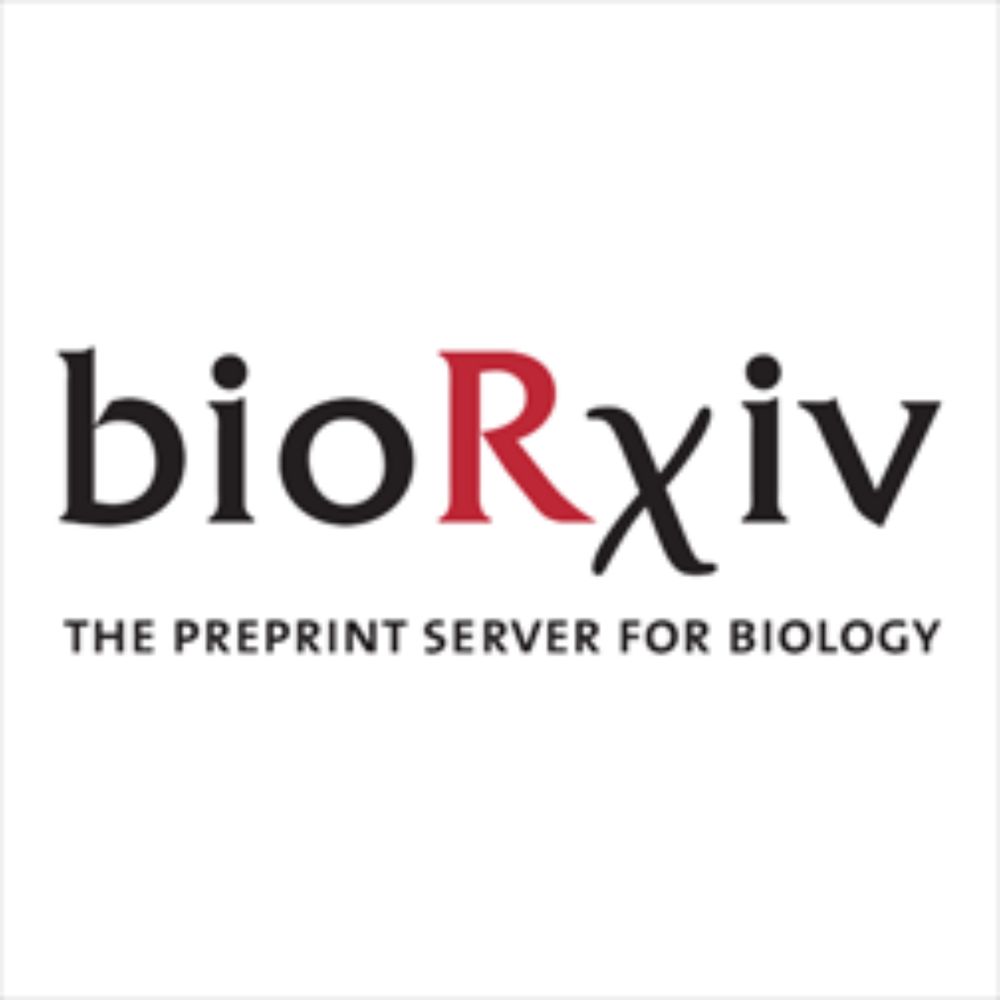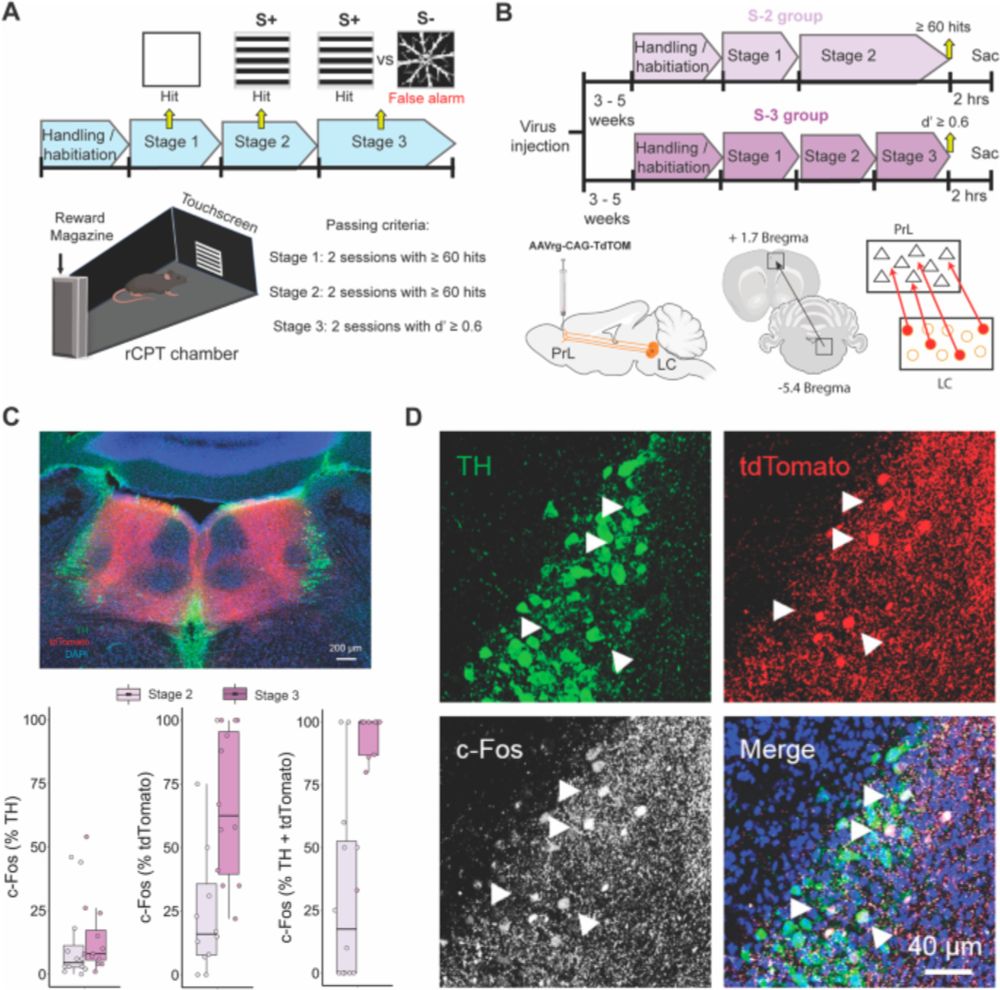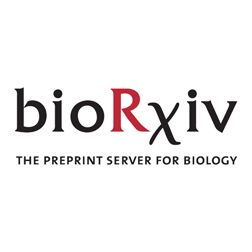Overexpression of the Apoe gene in the frontal cortex of mice causes sex-dependent changes in learning, attention, and anxiety-like
behavior
Peer-reviewed scientific journal publishing basic neuroscience research in the areas of neuronal plasticity, learning and memory
Many thanks to the hard-working and dedicated members of my lab who did this work (Liz Ramos, Sam Essig, Abby Harr, Nelly Fadil, Griffen Kempskie), and our collaborators in the Gabel lab at Lafayette. Link here: bit.ly/41ZWP0o
No open access, so DM me if you want a copy!
24.03.2025 15:02 — 👍 0 🔁 0 💬 0 📌 0
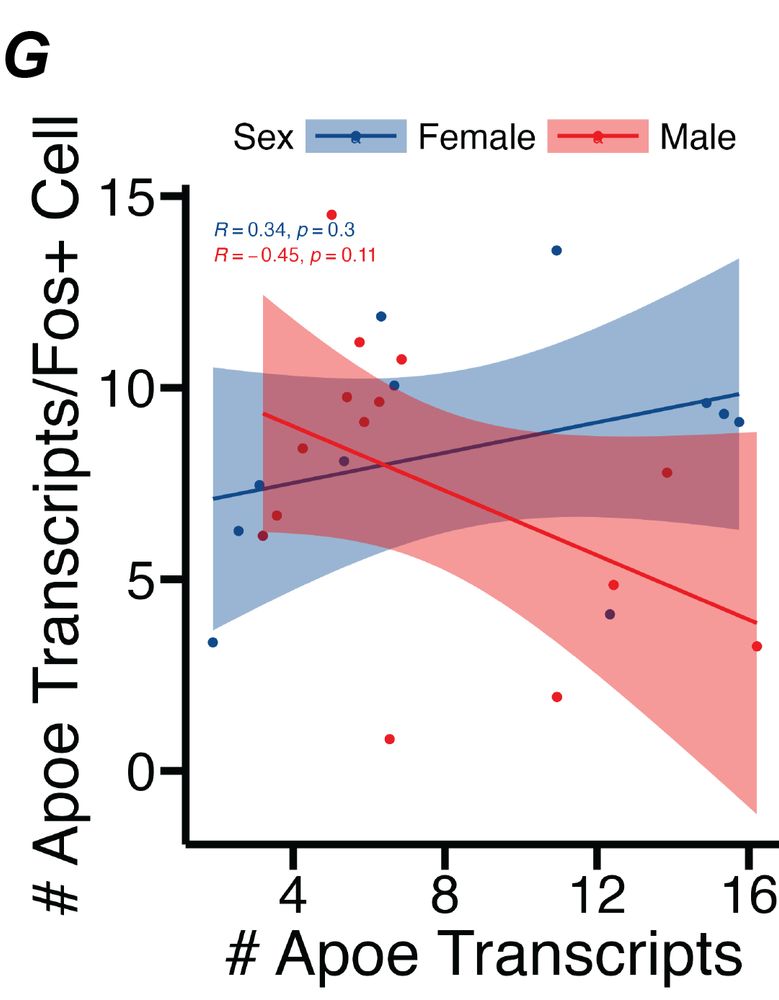
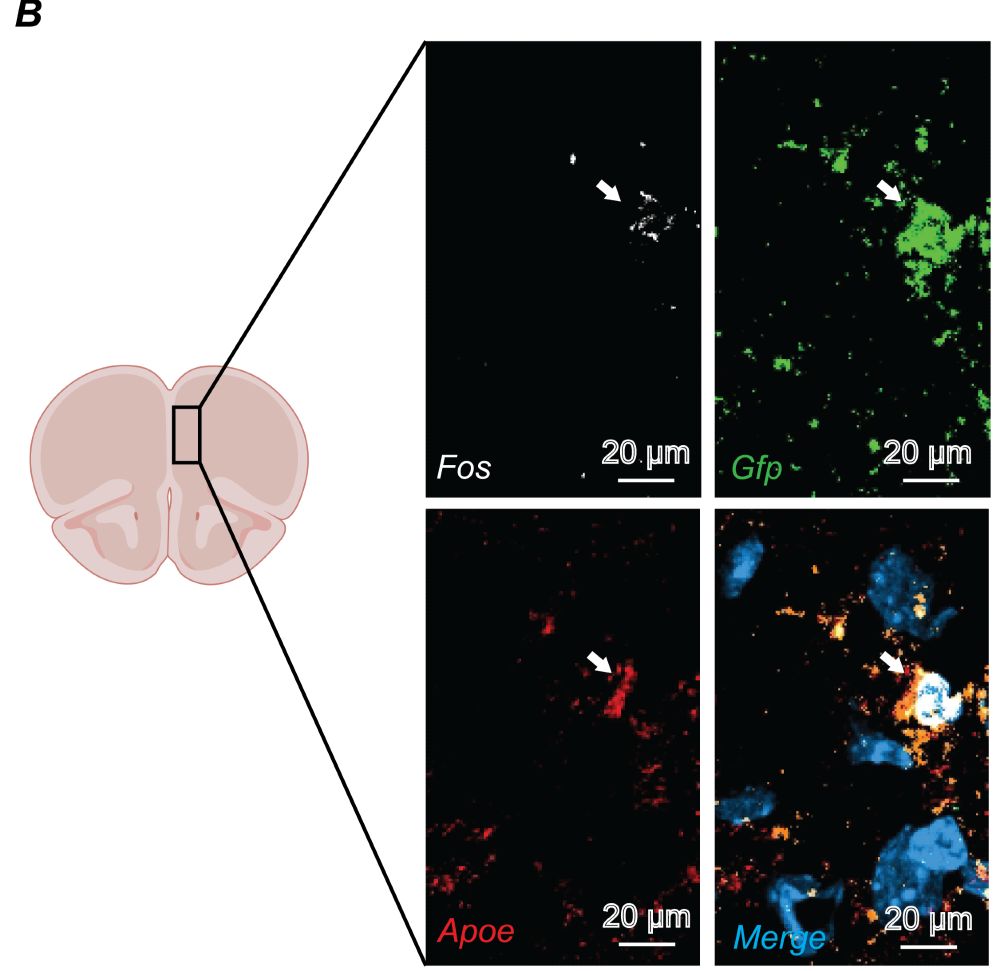
These effects occurred without differences in response latency or anxiety-like behavior. Why? We think it's because Apoe transcription affects different cell types, and therefore network activity, differently in males and females. We found cellular evidence for this by looking at Fos transcription.
24.03.2025 15:02 — 👍 0 🔁 0 💬 1 📌 0
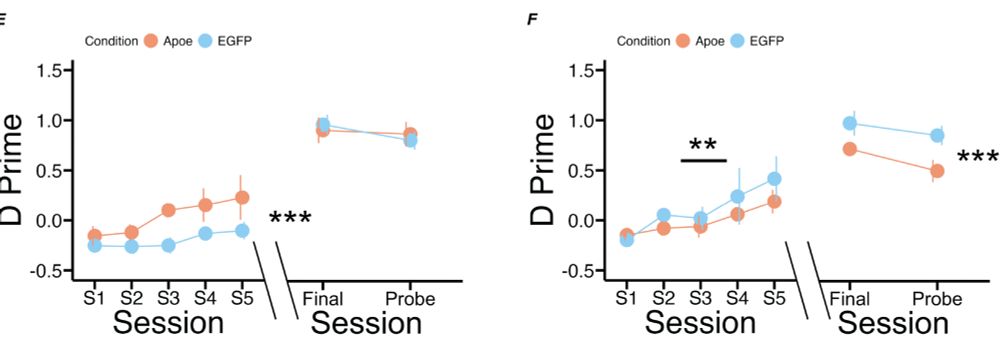
Specifically - Apoe overexpression accelerated task learning in female mice, while having no effect on learning in male mice. In contrast, Apoe overexpression decreased performance in well-trained male mice, but had no effect on performance in well-trained female mice. 3/n
24.03.2025 15:02 — 👍 0 🔁 0 💬 1 📌 0
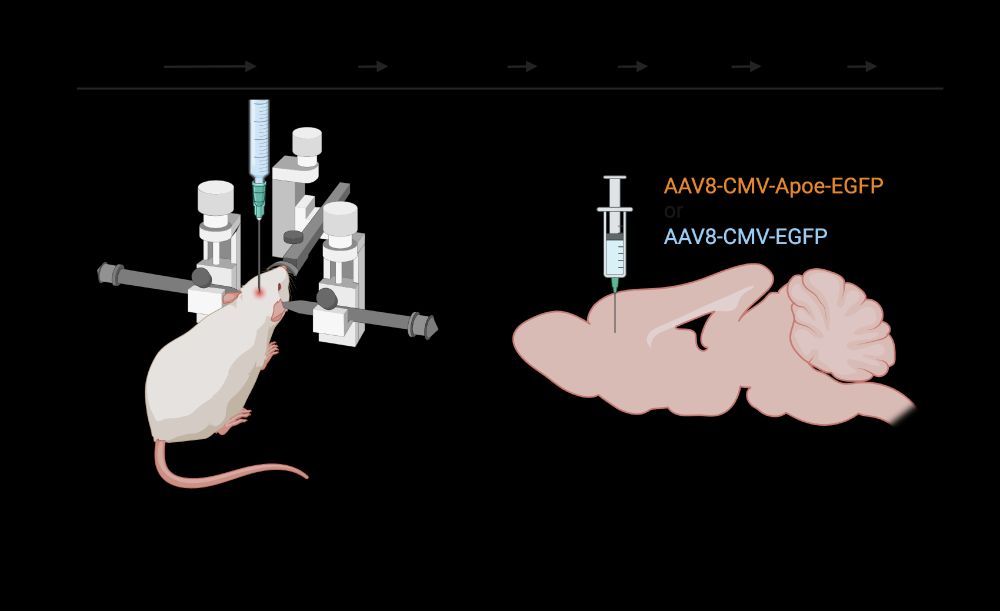
They used an expression cassette to induce Apoe transcription in the mouse frontal cortex, and tested these mice on a touchscreen attention task. The big takeaway is that Apoe overexpression affects males and females differently. 2/n
24.03.2025 15:02 — 👍 0 🔁 0 💬 1 📌 0
Super pleased to present the Hallock lab's second article, out now in Learning & Memory! In our first article, we found increased transcription of Apoe in a mouse attentional circuit. What is Apoe doing in this circuit? A super team of undergrads wanted to find out 👇 1/n
24.03.2025 15:02 — 👍 1 🔁 1 💬 1 📌 0

It begins...
05.02.2025 15:30 — 👍 3 🔁 2 💬 0 📌 0
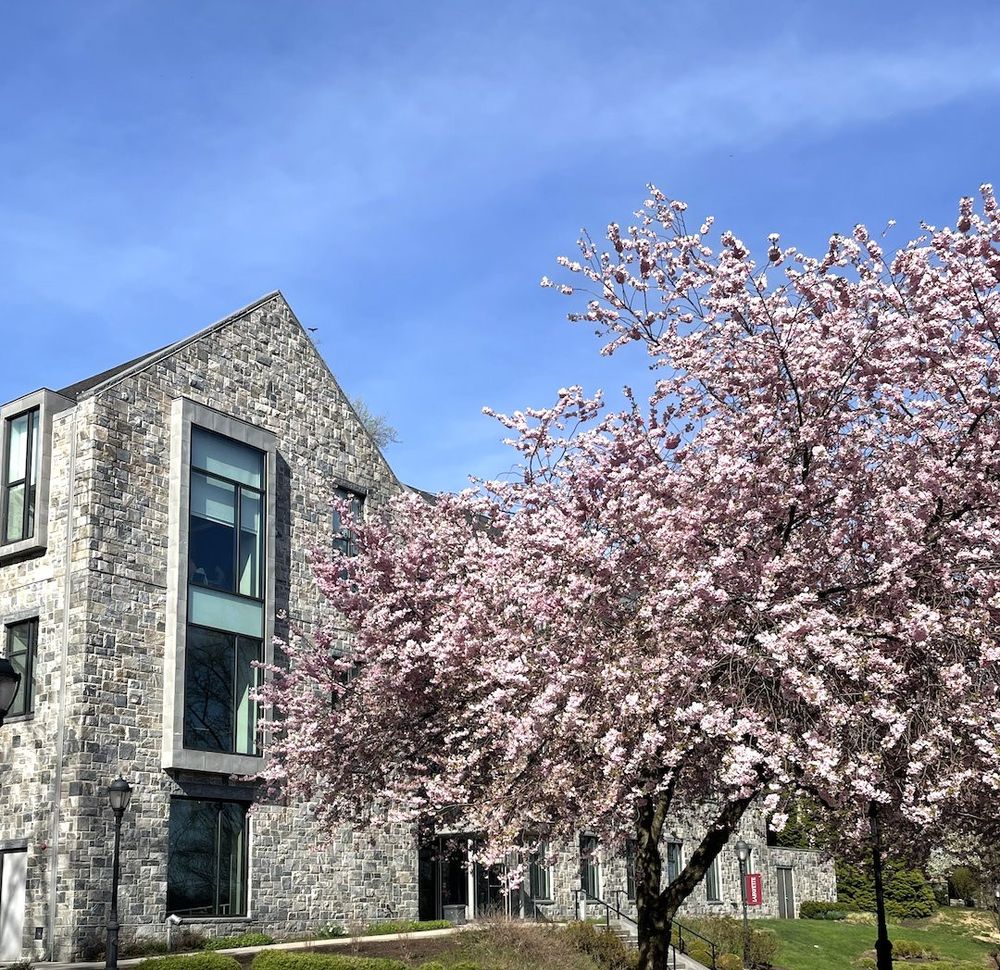
Grey stone Oechsle Center for Global Education building with pink blooming trees in foreground.
We're hiring a visiting asst prof of sociology at Lafayette College! Come work in a great dept with amazing students. And check out our sweet digs! Spread the word, reskeet wildly, and feel free to contact me if interested! apply.interfolio.com/161664
10.01.2025 16:25 — 👍 7 🔁 8 💬 0 📌 0
8/ I'm extremely grateful to Genevieve and other lab members, as well as @martinowk.bsky.social and @aejaffe.bsky.social for their support. It was such a boon to have an exciting project to take with me into my new lab. Would highly recommend if you're thinking of starting a lab.
08.01.2025 21:50 — 👍 3 🔁 0 💬 1 📌 0
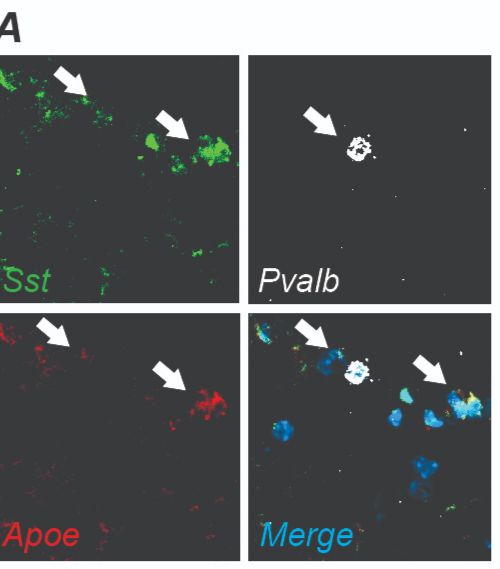
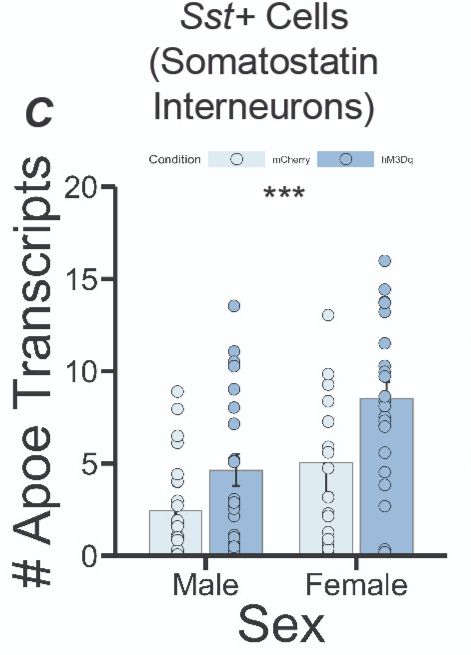
7/ Which types of neurons? Turns out, it's GABAergic neurons, and the subtype is somatostatin-expressing - but only in female mice! Most literature characterizes Apoe as a gene expressed in glia, but its activity-dependent expression seems strongest in inhibitory neurons.
08.01.2025 21:50 — 👍 5 🔁 0 💬 1 📌 0
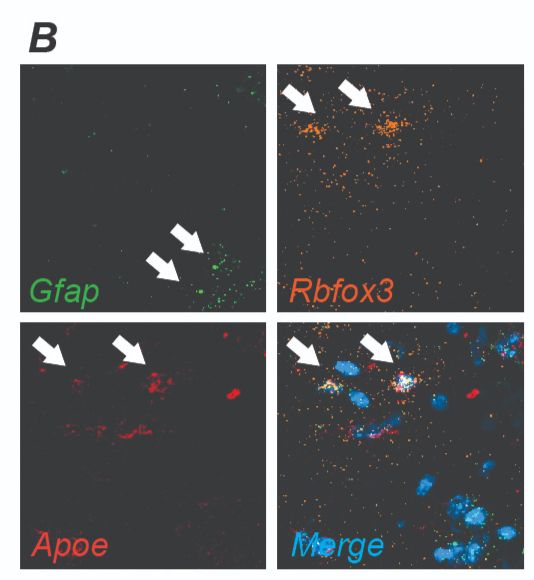
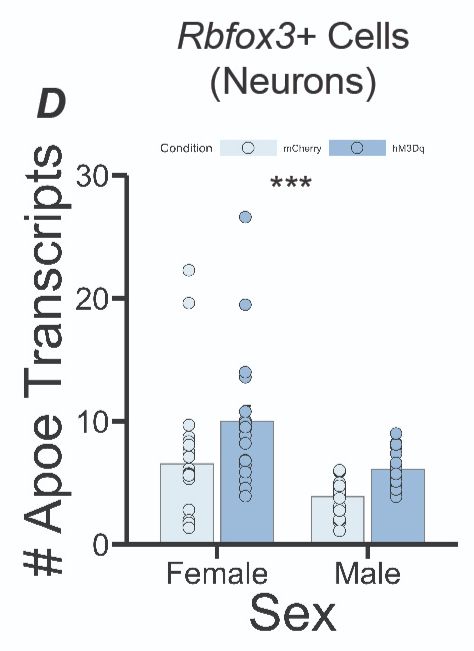
6/ My first thesis student, Genevieve Craig, repeated the original experiment, but this time with male and female mice. She also used RNAscope to look at Apoe expression in specific cell types. She found that LC induced Apoe expression was highest in neurons (compared to astrocytes).
08.01.2025 21:50 — 👍 4 🔁 0 💬 1 📌 0
5/ This was an intriguing (and unexpected) finding. Apoe is best known for its role in Alzheimer's disease, but alleles also correlate with attentional performance in humans. But where exactly is Apoe expressed within prelimbic cortex? When I started my lab at Lafayette, I wanted to dig deeper.
08.01.2025 21:50 — 👍 3 🔁 0 💬 1 📌 0
4/ To answer this question, we chemogenetically "activated" LC neurons with connections to prelimbic cortex. We did bulk RNA-sequencing on prelimbic cortex tissue, and found that the tissue was enriched for a host of genes. One gene that immediately popped out at us was the "Apoe" gene.
08.01.2025 21:50 — 👍 4 🔁 0 💬 1 📌 0
3/ We wondered: Are there molecular signatures of activation in this circuit? Given that the circuit is involved in attention, biomarkers for activity in this circuit would be valuable.
08.01.2025 21:50 — 👍 4 🔁 0 💬 1 📌 0
I'm a little late, but excited to post about the lab's first paper, out last month in @sfnjournals.bsky.social #eNeuro! We investigated changes in gene expression in the prelimbic cortex of mice in response to chemogenetic stimulation of inputs from the locus coeruleus 👇
08.01.2025 21:50 — 👍 28 🔁 8 💬 3 📌 0
For those interested in reading delightful retrospective pieces about the lives and careers of very accomplished memory researchers – there is a special issue of Hippocampus with a bunch of these articles!
onlinelibrary.wiley.com/toc/10981063...
17.12.2024 14:49 — 👍 37 🔁 16 💬 0 📌 0
Congratulations Tony!!
22.11.2023 00:57 — 👍 0 🔁 0 💬 0 📌 0
Not surprising at all. Congratulations @martinowk.bsky.social!
17.11.2023 19:13 — 👍 0 🔁 0 💬 0 📌 0

Come and say hi at the Hallock lab posters at SfN before you leave on Wednesday! Two talented undergrads will be presenting what they've been working on for the past couple of years.
10.11.2023 01:39 — 👍 5 🔁 1 💬 0 📌 0
How could you turn down having a book sell on eBay?
02.11.2023 00:30 — 👍 1 🔁 0 💬 1 📌 0
Working on SfN posters and instead of taking graphs from old poster on same project, decided I didn't like old graphs and spent all day figuring out how to change every aesthetic, resulting in one new graph. What sickness is this?
27.10.2023 19:47 — 👍 0 🔁 0 💬 0 📌 0
This is cool!
24.09.2023 12:34 — 👍 1 🔁 1 💬 0 📌 0

Lab's first Fluorescent Friday. Who needs hashtags?
22.09.2023 19:07 — 👍 5 🔁 1 💬 1 📌 0
Changing the lives of people with schizophrenia and related mental illnesses. Learn more about our research at www.libd.org.
associate professor of psych & neuro at Haverford College • behavioral neuroendocrinology • peripartum neuroplasticity • motivated behaviors • undergrad-driven research
Assistant Professor | Locus Coeruleus enthusiast | Ephys, (stressed) Synapses & Neuromodulators
Center for Neurogenomics & Cognitive Research | Amsterdam UMC
Stressing out, one day at a time | she/her
https://tinyurl.com/RigaLab-NoC
Investigator Lieber Institute for Brain Development
Aging lab @Stanford. Our interests include mechanisms of aging, brain aging and rejuvenation, neural stem cell aging, genetics of lifespan and suspended animation in killifish
Associate Prof @MGH @HarvardMed @MaastrichtUni | Locus coeruleus & other neuromodulators in early detection and prevention of Alzheimer’s disease | 7T MRI, PET
Texas A&M • Emory MSP PhD • CU Anschutz T32 DPRG postdoc • DPN editorial intern 🐭🧠👩💻
interested in PI3K, SABV, (in)flexible behavior, K-12 science outreach, sci comm, and my dog 🐕 | she/her/hers
Postdoc @ Johns Hopkins. Behavior, brains, biking, bagels.
ericgarr.com
Behavioural neuroscientist. With a 'u'. Slight obsession with astrocytes
Director, Penn State Neuroscience Institute - University Park; Huck Early Career Chair in Neurobiology and Neural Engineering, Departments of Biology & Biomedical Engineering.
Japan based neuroscientist, Team Leader at RIKEN Center for Brain Science, studying the neural basis of emotional learning & memory, adventure cyclist
Neuro Postdoc @ Harvard Med / Mass General | he/him
Astronomer, Assistant Prof of Physics. She/her. (All opinions mine & don't represent employer; likes/RPs not endorsements; etc)
Neuroscientist at Georgia State University 🐀🧠👩🏻🔬 stress | sex differences | scicomm | singing | silliness
she/her
http://tiktok.com/@neuroerin
Assistant Professor at University of Cincinnati COM | Neurobiology of stress and addiction researcher 👩🏻🔬 🧠🧪 | CA ☀️ transplant to the Midwest ❄️ | Cat mom 🐈⬛🐈⬛ | Always tired 🥱
Anesthesia resident, physician scientist
genomics & addiction neurobiology
🌈 &🐱 dad
Neuroscientist in Montréal
I will join your feminist organizing zoom meeting. She/her
Social psychologist and assistant professor @ Lafayette College
Studying the psychology of indulging in guilty pleasures and other ambivalent experiences
https://sites.lafayette.edu/togansl/
Postdoc @ UCSF studying anxiety circuits in the Kheirbeklab.org
DSPAN F99/K00 fellow





